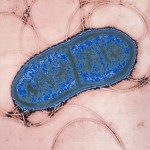Link to Pubmed [PMID] – 31377338
Methods 2019 Aug;
The catalytic null mutant of the Cas9 endonuclease from the bacterial CRISPR immune system, known as dCas9, can be guided by a small RNA to bind DNA sequences of interest and block gene transcription in a strategy known as CRISPRi. This powerful gene silencing method has already been used in a large number of species and in high throughput screens. Here we provide detailed design rules, methods and novel vectors to perform CRISPRi experiments in S. aureus and in E. coli, using the well characterized dCas9 protein from S. pyogenes. In particular, we describe a vector based on plasmid pC194 which is broadly used in Firmicutes, as well as a vector based on the very broad host-range rolling circle plasmid pLZ12, reported to replicate in both Firmicutes and Proteobacteria. A potential caveat of adapting dCas9 tools to various bacterial species is that dCas9 was shown to be toxic when expressed too strongly. We describe a method to optimize the expression level of dCas9 in order to avoid toxicity while ensuring strong on-target repression activity. We demonstrate this method by optimizing a pLZ12 based vector originally developed for S. aureus so that it can work in E. coli. This article should provide all the resources required to perform CRISPRi experiments in a broad range of bacterial species.


